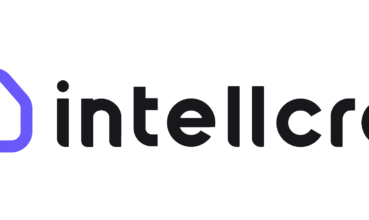The commercial mortgage-backed securities (CMBS) market faces a critical test over the next two years as approximately $89 billion in conduit fixed rate loans approach maturity, according to...
Dandelion Energy Mainstreams Geothermal Heating in Housing Developments




“We’re repackaging geothermal technology to make it affordable upfront, which has taken eight years so far and will require more time, but we’ve reached that milestone,” says Kathy Hannun, Co-Founder and President of Dandelion Energy, a company advancing residential geothermal heating and cooling systems across the United States.
From Google X to Geothermal Innovation
Hannun’s journey into geothermal energy began during her time as a product manager at Google X, the innovation lab known for pursuing “moonshot” technologies with potential for substantial positive impact. While exploring various opportunities, she became fascinated with geothermal heating and cooling, a technology that leverages the earth’s stable underground temperature to efficiently heat and cool homes.
“Buildings account for about 40% of energy use in the United States, with residential properties comprising a significant portion, and most building energy consumption goes toward heating and cooling,” Hannun explains. “Many regions of our country experience extreme cold in winter and intense heat in summer, with substantial indoor square footage requiring climate control for comfort.”
Despite geothermal’s efficiency and effectiveness, Hannun noticed a striking disconnect: while the technology had been widely implemented in countries like Sweden for decades, it remained largely a niche luxury product in America. This realization sparked her mission to identify and overcome the barriers preventing widespread geothermal adoption.
How Geothermal Heating Works
Geothermal heating and cooling operates on a remarkably straightforward principle. The system consists of a heat pump (similar in appearance to a furnace) connected to a “ground loop”, plastic pipes installed vertically beneath the home, extending approximately 300 feet down.
“The piping extends about 300 feet below the home, makes a hairpin turn, and comes right back up,” Hannun describes. “It resembles two pipes sitting adjacent to each other, connected at the bottom.”
These pipes contain water that circulates continuously, exchanging heat with the ground. In winter, the heat pump extracts heat from this water to warm the home. As the cooled water travels through the ground loop, it naturally warms back up to the stable underground temperature before returning to the heat pump. In summer, the process reverses, with the system removing heat from the home and transferring it into the ground.
The benefits for homeowners are substantial:
- No outdoor equipment, eliminating noise associated with traditional air conditioning units
- Significantly lower utility bills, as most energy comes from the ground beneath the house
- Minimal maintenance requirements, with system components protected from the elements
- System lifespans two to three times longer than conventional HVAC systems
- No risk of carbon monoxide poisoning, as the system runs entirely on electricity
Breaking into Mainstream Development
Dandelion Energy’s recent partnership with Lennar, one of America’s largest homebuilders, represents a watershed moment for geothermal adoption. The collaboration will bring geothermal heating and cooling to over 1,500 homes in the Denver, Colorado area over the next two years.
“This partnership marks a significant milestone because Dandelion’s purpose is to establish geothermal as a mainstream technology,” Hannun says. “Lennar is a mainstream home builder operating at tremendous scale, constructing tens of thousands of homes annually.”
The key to this partnership’s success lies in Dandelion’s innovative installation approach. Rather than retrofitting existing homes—a more complex and costly process—they install the ground loops before construction begins.
“We collaborate with Lennar and other builders to install ground loops before house construction starts,” Hannun explains. “At that stage, it’s simply a stretch of land that will become a neighborhood, making it efficient and cost-effective to bring in drill rigs and create multiple boreholes without obstacles.”
As Dandelion installs the ground loops, the homebuilder follows, pouring foundations and constructing homes around them. When the time comes, the builder’s HVAC contractor installs the heat pump, a process similar to installing any other HVAC equipment.
The Economics of Geothermal
Perhaps the most significant breakthrough is that Dandelion has made geothermal cost-competitive with conventional systems in several regions. In the Northeast, Mid-Atlantic, and Colorado, the upfront cost is now comparable to or even less than traditional HVAC systems.
“With Lennar, the cost is comparable. They’re not paying more to install our system, which has enabled adoption at this larger scale,” Hannun notes. “While this isn’t true everywhere in the country today, it is valid in several regions.”
For homeowners, the operating costs are even more compelling. Geothermal heating and cooling is approximately 10% cheaper than natural gas, about half the cost of using an air-source heat pump, and dramatically less expensive than propane or fuel oil.
“There is no less expensive way to heat or cool a home,” Hannun states emphatically.
Overcoming Adoption Barriers
Introducing an alternative product for critical home systems naturally requires extensive due diligence from builders. Dandelion’s approach has been to start with smaller pilot projects that allow builders to gain firsthand experience with the technology.
“For many customers, we began with smaller projects where they could experience geothermal installation and operation directly,” Hannun explains. “Once they completed that initial project, the process became much easier because they experienced it firsthand and understood why this has historically been considered a premium product.”
This strategy has proven effective, with Dandelion now operating thousands of systems throughout the Northeast and expanding into Colorado, Maryland, Texas, New Jersey, South Carolina, and Vermont.
Looking Ahead: A Potential Inflection Point
For Hannun and Dandelion Energy, the next two years will focus on geographic expansion, transitioning from a regionally focused company to one serving customers nationwide.
“This is a particularly meaningful moment because it’s the first time in the United States that geothermal doesn’t cost more for a major home builder compared to gas furnaces and air conditioners,” Hannun reflects. “That’s remarkable and potentially represents an inflection point for our industry.”
If Dandelion’s vision materializes, geothermal heating and cooling could become the standard for new residential developments, benefiting homeowners through lower energy costs and increased comfort while reducing energy consumption and carbon emissions nationwide.
As Hannun concludes: “This would greatly benefit both homeowners and our national energy systems.”
Similar Articles
Explore similar articles from Our Team of Experts.


The commercial real estate (CRE) industry is making significant advancements in the analysis and valuation of properties, as market pressures compel professionals to reevaluate long-standing...


In a market where housing affordability remains a pressing concern, Contemporary Tiny Homes is bringing Accessory Dwelling Units (ADUs) to Connecticut and the broader East Coast region. Foun...


In an industry fraught with fragmentation and manual processes, Finaya is taking an ambitious swing at transforming the homeownership experience. Led by tech veteran Naren Nath, the company ...


Healthcare insurers are discovering an unexpected ally in their mission to reduce costs: the real estate industry. At the forefront of this convergence, one company is turning housing stabil...




